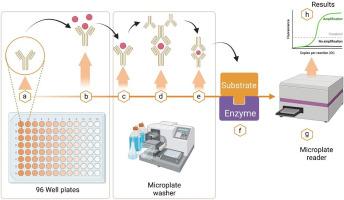Diagnosis of extraintestinal pathogenic Escherichia coli pathogenesis in urinary tract infection
IF 4.8
Q1 MICROBIOLOGY
引用次数: 0
Abstract
Extra-intestinal pathogenic Escherichia coli (ExPEC) is a virulent pathogen found in humans that causes the majority of urinary tract infections, and other infections such as meningitis and sepsis. ExPEC can enter the urinary tract through two modes: ascending from the bladder or descending from the kidneys. Human anatomical structures generally prevent the transmission of pathogens between the extra-intestinal area, kidneys, bladder, and urinary tract. However, adhesins, a virulence protein of ExPEC, promote the initial bacterial attachment and invasion of host cells. In addition to adhesion proteins, ExPEC contains iron acquisition systems and toxins to evade the host immune system, acquire essential nutrients, and gain antibiotic resistance. The presence of antibiotic-resistant genes makes treating ExPEC in urinary tract infections (UTIs) more complicated. Therefore, screening for the presence of ExPEC among other uropathogens in UTI patients is essential, as it can potentially aid in the effective treatment and mitigation of ExPEC pathogens. Several diagnostic techniques are available for detecting ExPEC, including urine culture, polymerase chain reaction, serological testing, loop-mediated isothermal amplification, and biochemical tests. This review addresses strain-specific diagnostic techniques for screening ExPEC in UTI patients.

尿路感染中肠道外致病性大肠埃希菌发病机制的诊断
肠道外致病性大肠埃希菌(ExPEC)是一种在人类中发现的烈性病原体,可引起大多数泌尿道感染以及脑膜炎和败血症等其他感染。ExPEC 可通过两种方式进入泌尿道:从膀胱上升或从肾脏下降。人体解剖结构通常会阻止病原体在肠外、肾脏、膀胱和泌尿道之间传播。然而,粘附蛋白是 ExPEC 的毒力蛋白,可促进细菌最初附着和侵入宿主细胞。除粘附蛋白外,ExPEC 还含有铁获取系统和毒素,以躲避宿主免疫系统、获取必需营养并获得抗生素耐药性。抗生素耐药基因的存在使得治疗尿路感染(UTI)中的 ExPEC 变得更加复杂。因此,在尿路感染患者中筛查 ExPEC 和其他尿路病原体至关重要,因为这可能有助于有效治疗和减少 ExPEC 病原体的感染。目前有多种诊断技术可用于检测 ExPEC,包括尿培养、聚合酶链反应、血清学检测、环介导等温扩增和生化检测。本综述探讨了用于筛查UTI 患者 ExPEC 的菌株特异性诊断技术。
本文章由计算机程序翻译,如有差异,请以英文原文为准。
求助全文
约1分钟内获得全文
求助全文
来源期刊

Current Research in Microbial Sciences
Immunology and Microbiology-Immunology and Microbiology (miscellaneous)
CiteScore
7.90
自引率
0.00%
发文量
81
审稿时长
66 days
 求助内容:
求助内容: 应助结果提醒方式:
应助结果提醒方式:


